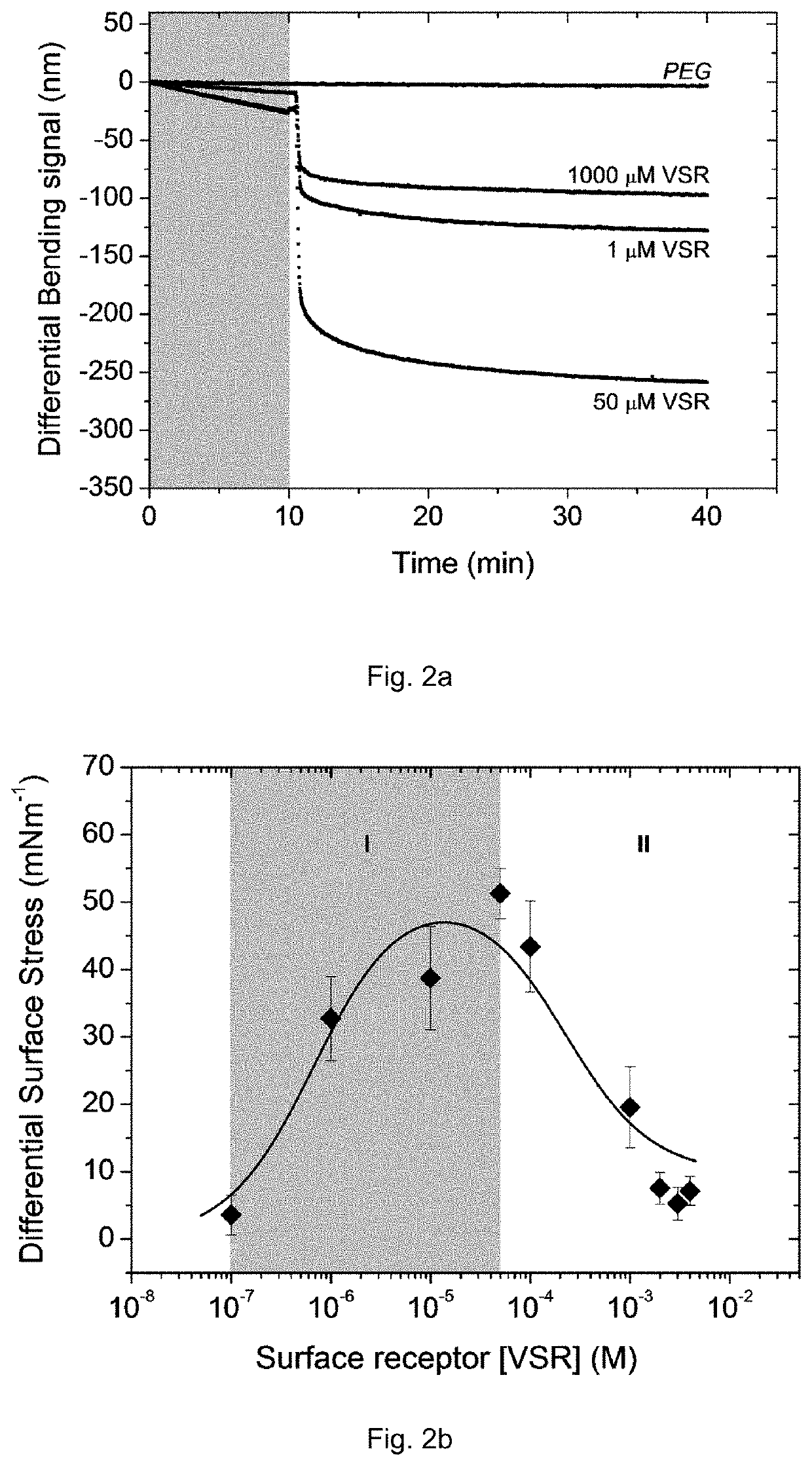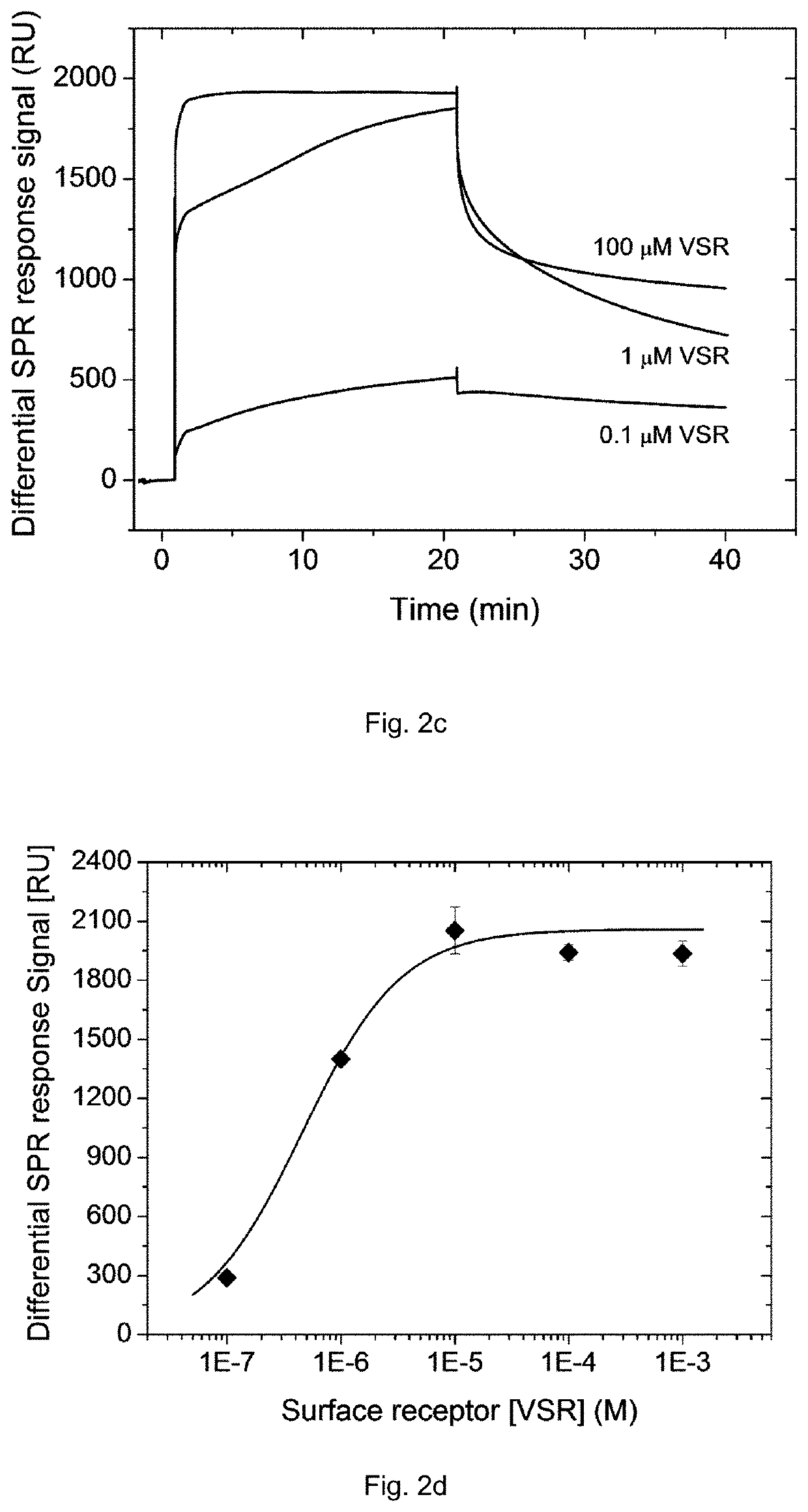Cantilever sensors for molecule detection
a cantilever sensor and sensor array technology, applied in the field of cantilever sensors and cantilever sensor arrays, can solve the problems of tedious optimization, long passivating of the underside of the cantilever to prevent unwanted ligand adsorption, and the improvement of the sensitivity and selectivity of the cantilever is not finished, so as to improve the selectivity and sensitivity, and improve the sensitivity. , the effect of improving the selectivity
- Summary
- Abstract
- Description
- Claims
- Application Information
AI Technical Summary
Benefits of technology
Problems solved by technology
Method used
Image
Examples
examples
[0079]Cantilever Metal Coating
[0080]Cantilever chips fabricated from Si (100) by IBM Research Laboratory, RUschlikon, Switzerland were first cleaned with freshly prepared piranha solution (ratio 1:1 H2SO4 and H2O2) for 20 min. Arrays were then thoroughly rinsed in deionized water before immersing in the second freshly prepared piranha solution for another 20 min, and again rinsed thoroughly with deionized water. Finally, the arrays were rinsed with pure ethanol and dried on a hotplate at 70° C. for 20 seconds. They were then inspected using the optical microscope to confirm their cleanliness before transferred to the evaporation chamber (BOC Edwards Auto 500, U.K.) for an overnight pumping. One side of the silicon cantilever surface was metalized using an electron beam evaporation with a 2 nm Ti adhesion layer followed by 20 nm of Au at a base pressure of ˜3×10−7 mbar, and at an evaporation rate of 0.02 nm / s for Ti and Au, respectively, as measured directly above the source by a qua...
PUM
| Property | Measurement | Unit |
|---|---|---|
| surface area | aaaaa | aaaaa |
| thickness | aaaaa | aaaaa |
| thickness | aaaaa | aaaaa |
Abstract
Description
Claims
Application Information
 Login to View More
Login to View More - R&D
- Intellectual Property
- Life Sciences
- Materials
- Tech Scout
- Unparalleled Data Quality
- Higher Quality Content
- 60% Fewer Hallucinations
Browse by: Latest US Patents, China's latest patents, Technical Efficacy Thesaurus, Application Domain, Technology Topic, Popular Technical Reports.
© 2025 PatSnap. All rights reserved.Legal|Privacy policy|Modern Slavery Act Transparency Statement|Sitemap|About US| Contact US: help@patsnap.com



